Final Audio ZE8000 Review
The ZE3000 and ZE2000 are among some of my favorite wireless buds, so I was pretty excited to get the chance to review the Final Audio ZE8000, the company’s new true wireless flagship. Its $350 tag puts it squarely in high-end territory when it comes to wireless earphones, so my expectations are set a bit higher than usual. When I first put the ZE8000 in my ears, I was fully expecting a familiar timbre and balance: some sort of enhanced ZE3000 or ZE2000. What I heard instead surprised me, and isn’t quite like anything I’ve heard from Final. The Final Audio ZE8000 is a pleasant new wireless release, and as usual, I’ll be going over some of its physical and technical details before I talk about what it sounds like.
What’s In the Box?
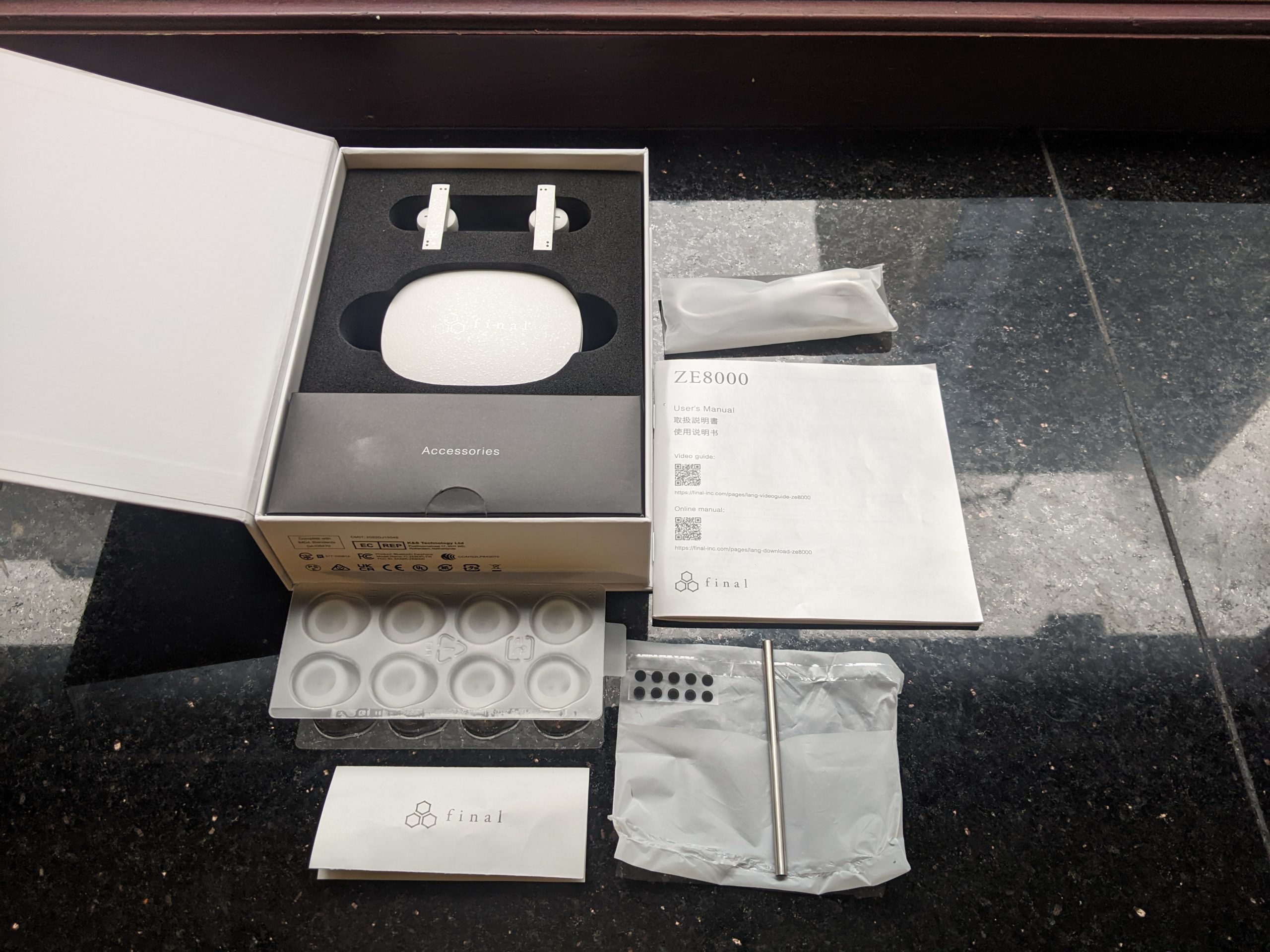
- Final Audio ZE8000 Earphones
- Charging Case
- ZE8000 Exclusive Type Q Ear Tips (5 Sizes)
- USB Type-C Charging Cable
- Dust Filters
- Acoustic Tool (used for dust filters)
- Instruction Manual
Look and Feel
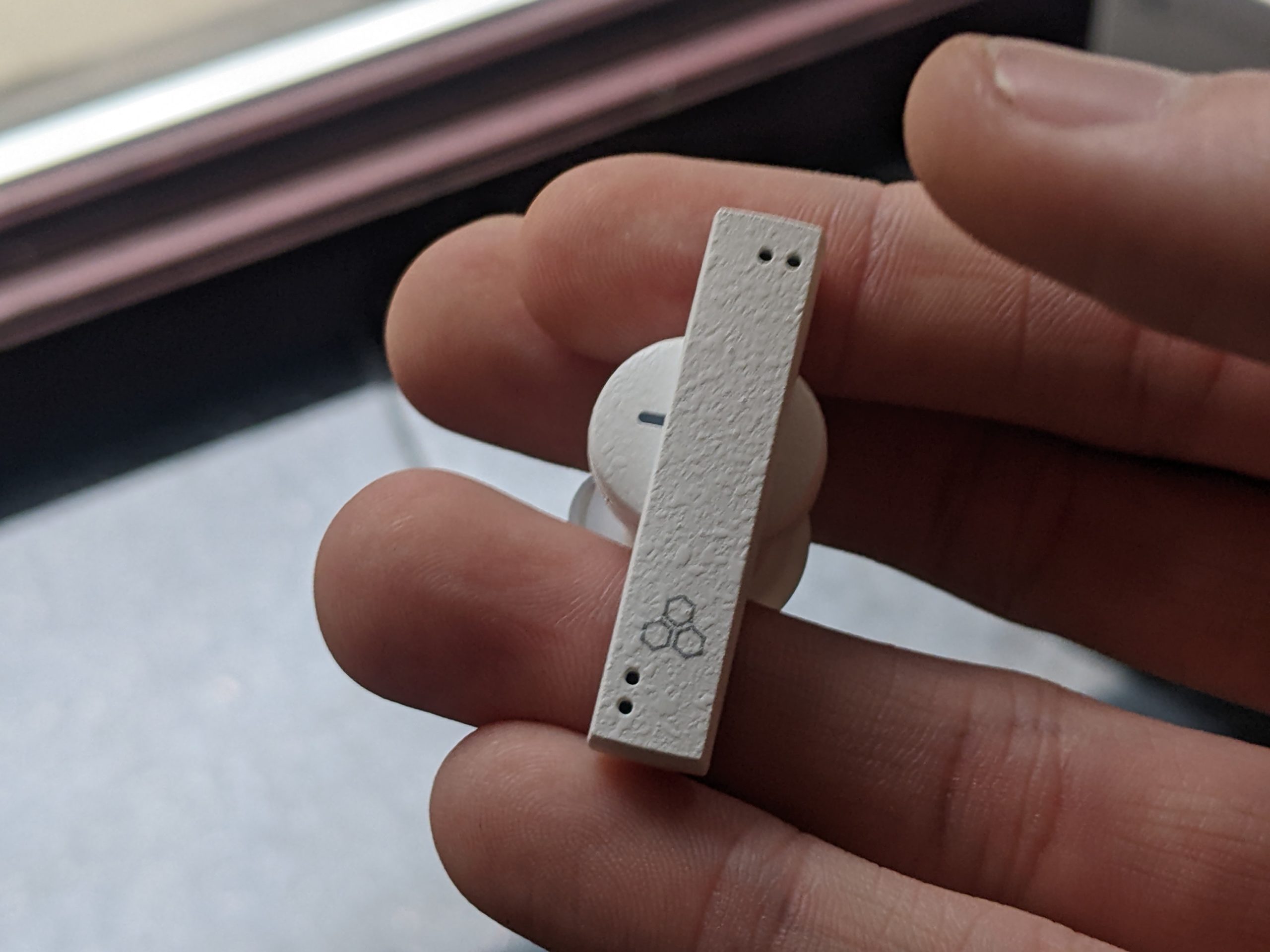

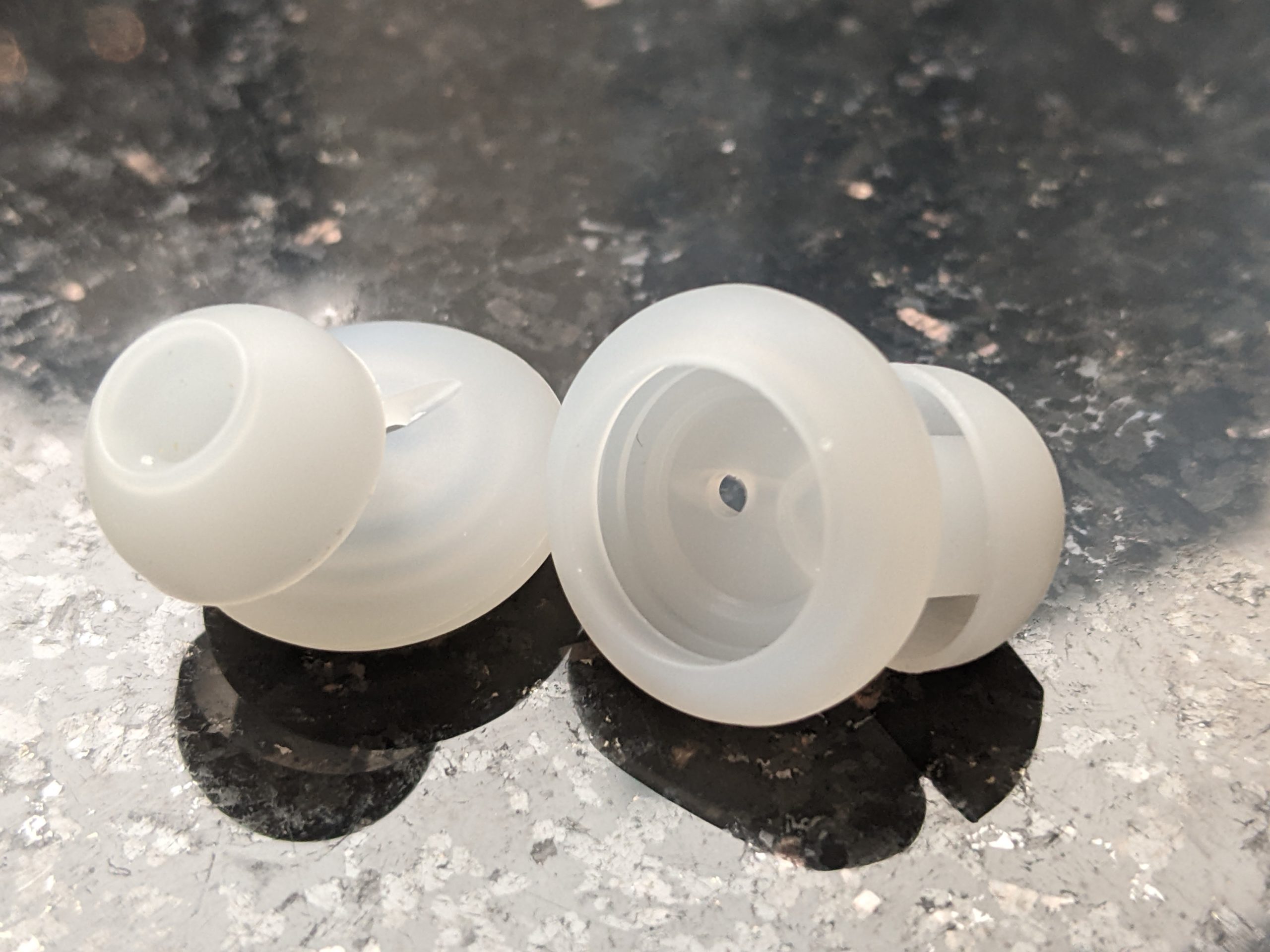
The first thing most people are going to notice when they have the ZE8000 in their hands is 1) how big it is, and 2) it’s unusual shape and build. Its long stems run from nearly my cheekbone to just millimeters from the upper ridge of my ear. A round protuberance fills my ear’s concha, and holds the acoustic nozzle which establishes a fairly shallow and comfortable fit in my ear canal. The passive isolation is pretty great – some times too good, as pressing the earphones too hard into my ears created a vacuum which muted the audio. I experienced this during my learning period with unit, and came to realize the fit is supposed to be relaxed, and that I should stop trying to jam them in for the deepest possible fit (in-ear sadists take note).
As strange as it may look, the ZE8000 is very comfortable, lightweight, and seemingly durable. I had a hard time finding information on the materials used for its housing at the time of writing this article, but my best guess, based on what I saw and felt, is ABS resin with a textured shibo finish (as seen on the Final Audio A5000, 4000, and 3000). The ear tips provided are Final Audio Type Q ear tips, and are exclusive to the ZE8000 for now. They cover the acoustic nozzle as well as the round-shaped portion that rests in a listener’s concha. Some might be a little disappointed that they can’t use their favorite tips, but ultimately I found the Type Q tips perfectly comfortable.
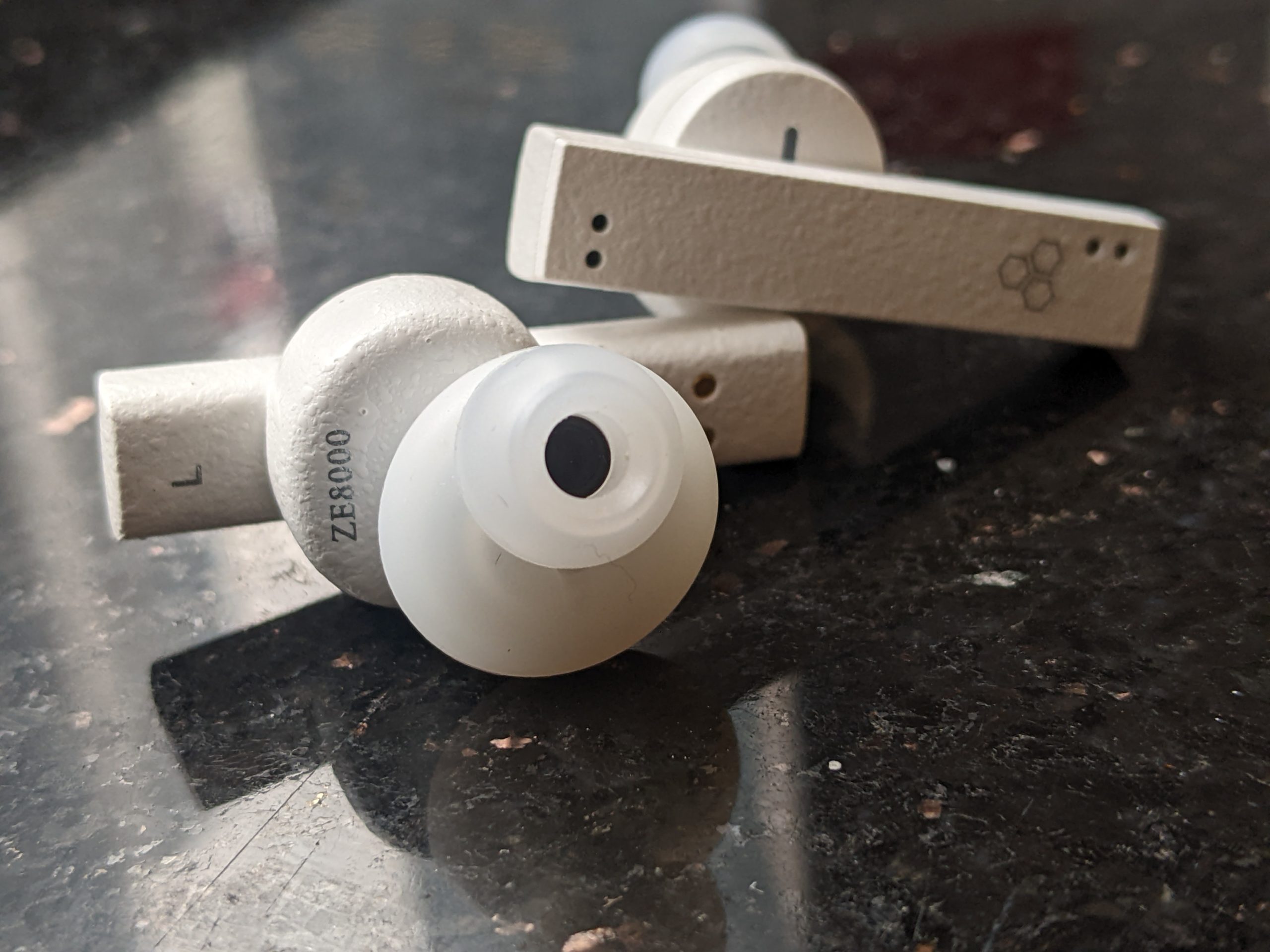
Technical Specs
Final Audio touts the inclusion of 8K Audio, which Final describes as a sort of time calibration that gets applied to the ZE8000’s audio processing. This results in enhanced separation and distinction. 8K Audio can be turned on and off in the Final Connect app, which I’ll discuss shortly. Also, this wouldn’t be a Final Audio release if it didn’t feature their in-house designed F-Core Du dynamic driver that focuses on virtually eliminating distortion.
| Specs | ZE8000 |
| Battery | 5 Hours Playback, 15 more in case |
| Charge Time | 1.5 hours for Earphones, 2 Hours for Case |
| Bluetooth | 5.2 |
| Codecs | AAC, SBC, Qualcomm aptX, aptX Adaptive |
| Water Resistance | IPX4 |
| Frequency Response | 20 Hz – 44 kHz |
Battery, ANC, Microphone, Bluetooth Connection
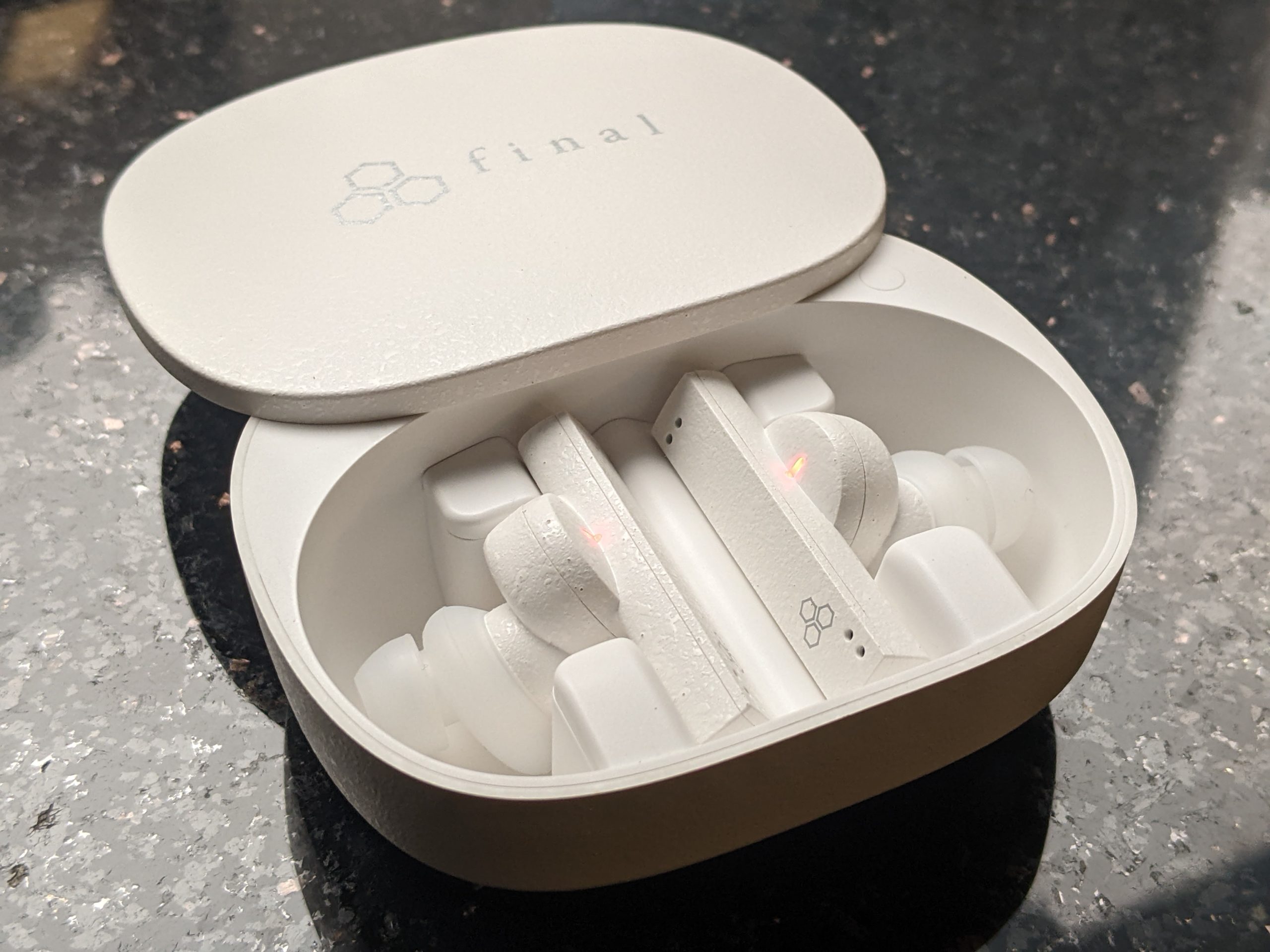
The ZE8000 is on the shorter end of things when it comes to battery life. It features 5 hours of continuous playback and another 15 hours in the charging case. This isn’t ideal, but it kind of makes sense: the ZE8000 isn’t catering to casual/athletic listeners who are prioritizing convenience and utility, but rather finds its appeal from a boutique audiophile angle.
When it comes to its noise canceling, I wasn’t particularly impressed nor disappointed. I had one experience where the ZE8000 seemed to confuse itself and output an imperfect phase flipped signal, which I thus noticeably heard in one of my ears. Upon disconnecting the Bluetooth, returning the buds to their case and giving it another try, I didn’t have this issue again and the active noise cancellation seemed decent enough. I would have liked to hear cancellation that crept up just a bit higher in pitch.
Transparency mode was similarly average: not the greatest I’ve heard, but also not harsh and grating. Microphone call quality seemed somewhat sensitive to movements such as rustling clothes, but was nonetheless pretty crisp and clear.
Bluetooth connection was perfect and I didn’t experience any cut outs when I used the ZE8000 in a stable environment. Pairing was fast and easy.
Don’t be discouraged from some of the lukewarm features mentioned in this section: the ZE8000 holds its value in its sound quality, something I wish I could say about more wireless releases.
App
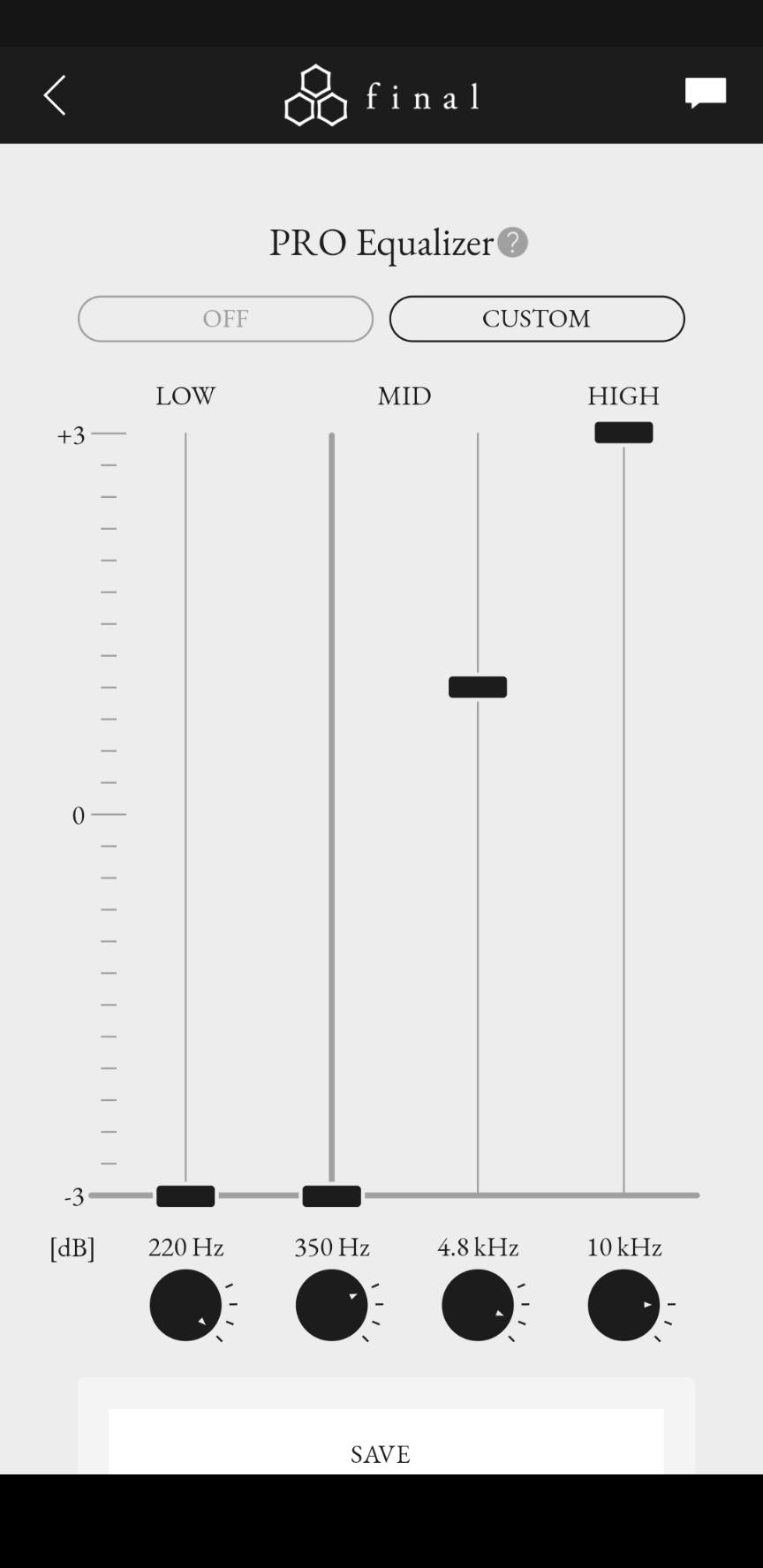
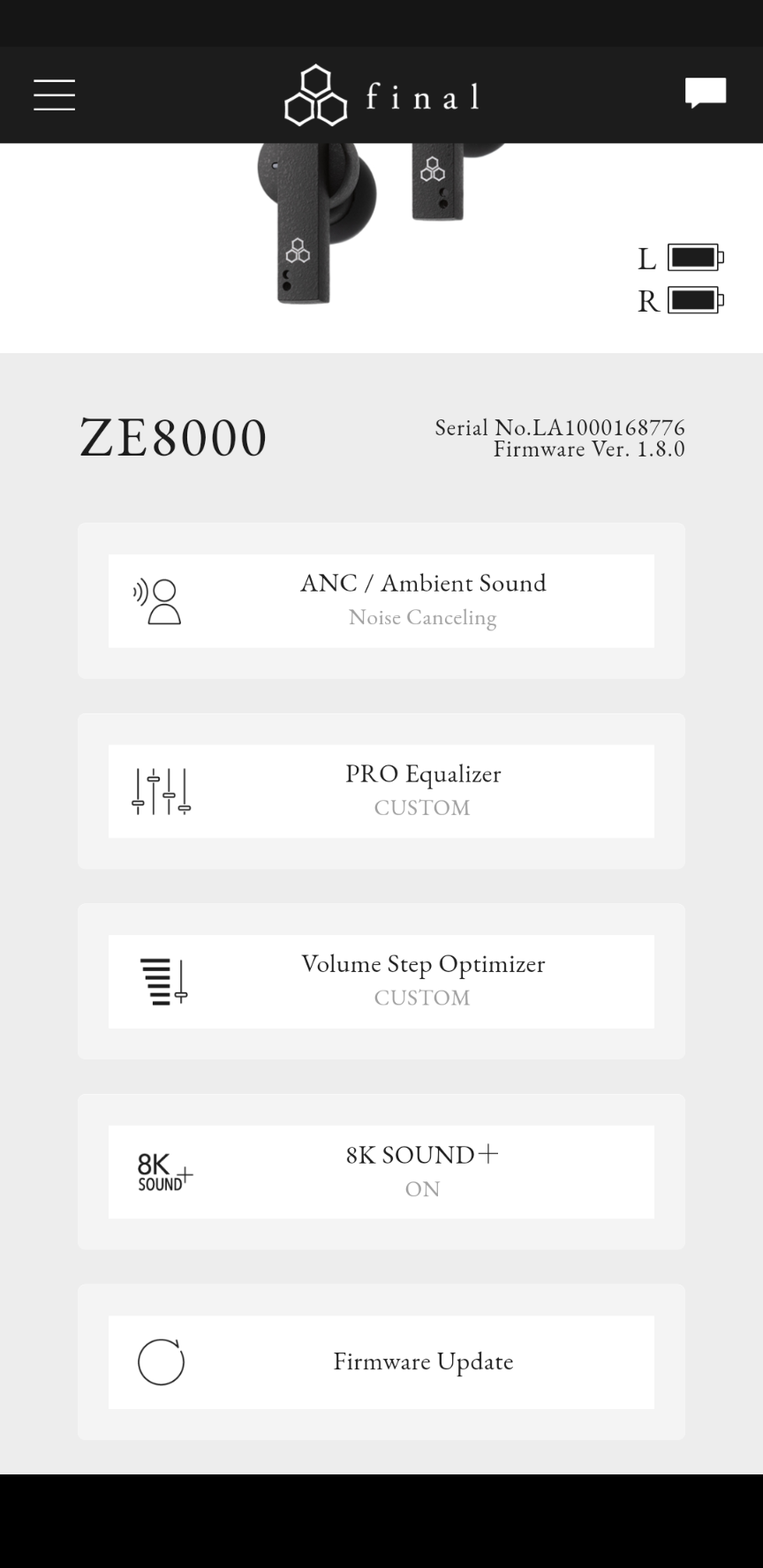
The Final Connect App allows you to choose between four types of Noise Canceling modes, adjust an equalizer, use Volume Step Optimizer (for fine tuning listening volumes), and turn 8K Sound on and off. I used this app prior to its official release, but didn’t really run into any bugs besides not being able to save my custom EQ adjustments, something I can easily forgive of an app pre-release.
EQ adjustments are limited to four bands and +/- 3dB of adjustment per band. Each band has 4 frequency options to choose from, making this feature a little more customizable than it may first appear. I’m including a screenshot of the adjustments I made so you can see what I’m talking about, and also get a sense of what adjustments I found appropriate before we start talking about balance. I’ll discuss this a little more when I talk about balance, but I was quite the fan of this equalizer and its resulting adjustments.
Sound Stage
Simply put, Final Audio’s ZE8000 has some of the best imaging I’ve heard from any wireless bud. Its stage is a bit narrow, but its depth is impressive. Parts didn’t feel externally distanced, but rather internally 3 dimensional and placed along the inside of my skull. I felt its powerful low end slam situated against the back of my head, punchier, higher pitched transients along my cheek bones, and vocals sitting cleanly centered behind my forehead. The level of spatial separation the ZE8000 provided was quite impressive to hear from a wireless earphone, which frequently lack interesting spatial dynamics and come across in a somewhat boring 2D linearity.
A general note on balance before I get into the specifics: I found the Final Audio ZE8000 sounded bit dense in the high bass/low mids without any in-app EQ. As you can see from my EQ screenshot, I dialed these frequencies down and was pretty happy with the result. The ZE3000 and ZE2000 seemed to be wireless reinterpretations of Final Audio’s A in-ear series, while the ZE8000 reminded me a bit more of the E series with its warmer and somewhat darker tonal qualities.
Lows
Final didn’t hold back on the subs and mid bass in the ZE8000. Rumble and slam were abundantly present without sacrificing much in the way of accuracy and timbre detail. Kick drums and bass lines were given tons of power and punctuation that cut through mixes without completely overpowering and masking them. This quality provided a lot of listening satisfaction for more electronic tracks. Without my EQ adjustments, my criticism of this low end would have been its imprecise distinction between high bass and low mids. However, I found my adjustments resulted in the cleaner distinction I was looking for. Frequently I find in app EQ’s to sound either too artificial or too subtle, but Final Audio seemed to hit the nail on the head with the Final Connect EQ.
Mids
When vocals actually sound like they were meant to sound on a wireless unit, it’s a pretty good sign that something was done right. Though the overall center frequency profile seems to favor low mids, vocal fundamentals found a pretty natural balance with their upper and center mid overtones – no pillowy wireless quality detected. Guitars also sounded surprisingly natural, finding appropriate high-mid levels that retained brightness and drive. Drums had a little extra thump in their impact, which came across as pleasantly warm rather than muddy. Though low mids are prominent, they’re well balanced with a high mids profile that avoids a muffled character and retains realistic presence.
Highs
Though I would have liked to hear a little more extension in its upper treble, the Final Audio ZE8000 isn’t shy in its low and mid treble. Acoustic guitars had twang, and singers’ mouth noises were realistically present while (mostly) avoiding harsh sibilants. Higher pitched percussion like snaps or hand claps were noteworthy, popping out crisply and clearly. I was able to get a little bit of the extension I was looking for by once again making use of the in app EQ. Despite my personal trebly preferences, the Final Audio ZE8000s somewhat heavy-handed treble roll off seems to be conducive to a timbre that avoids listening fatigue and will likely be appreciated by those who are less enthusiastic about treble than I am.
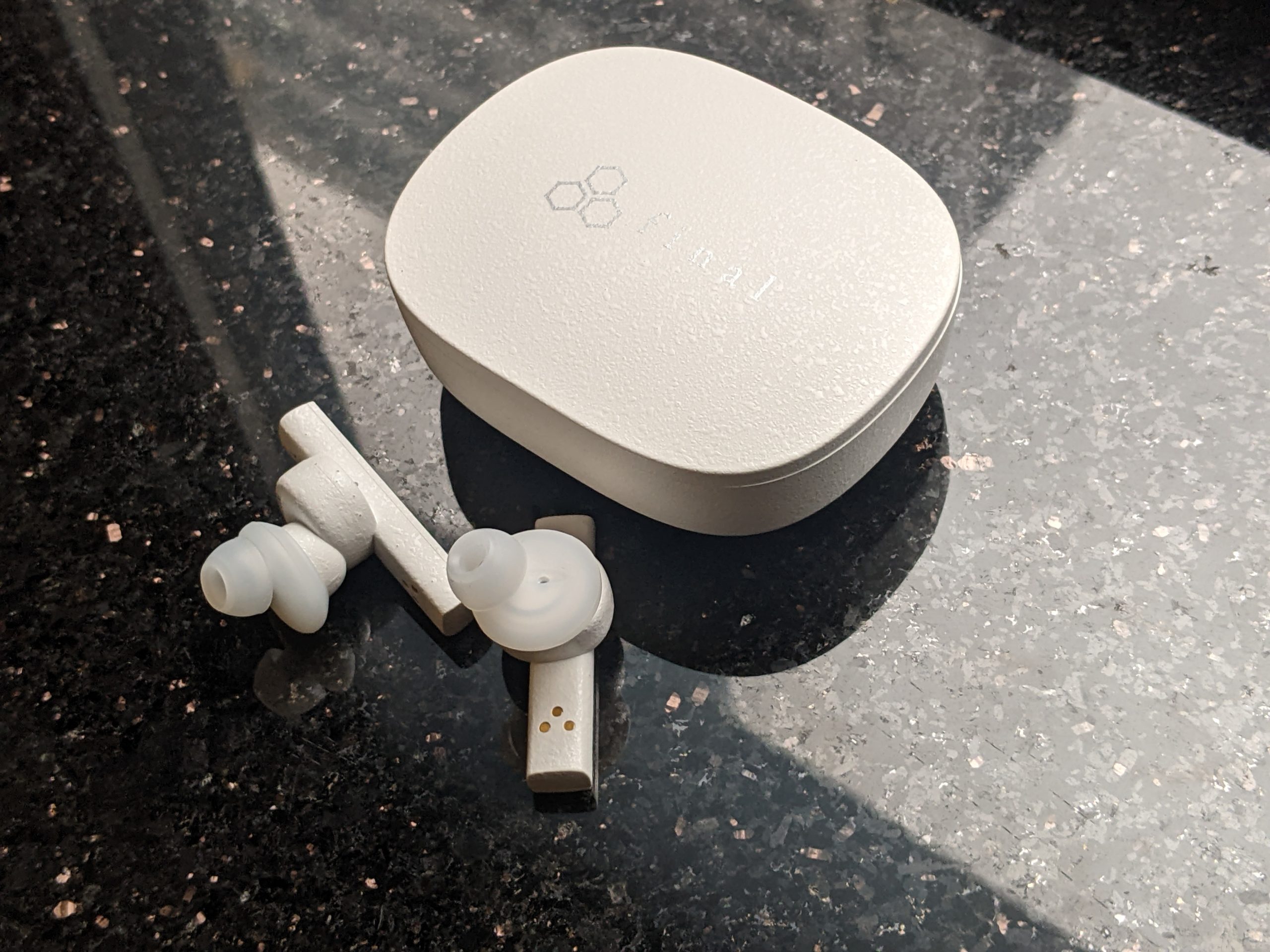
Overall
The Final Audio ZE8000 doesn’t pretend to be a sporty and casual wireless earphone – this one is for the audiophiles looking for a wireless unit that puts sound quality before all else. The ZE8000 offers excellent imaging along with a warm-yet-clear balance. The fit may be a bit unusual, but it turned out to be a non-issue for me once I got used to it. The ZE8000 doesn’t sound, look, or feel like anything else in the wireless market right now – Final Audio seemed to carve a new wireless path with it, and if you ask me, their risk paid off.
The Final Audio ZE8000 can be purchased here from Audio46.
MAJORHIFI may receive commissions from retail offers.







